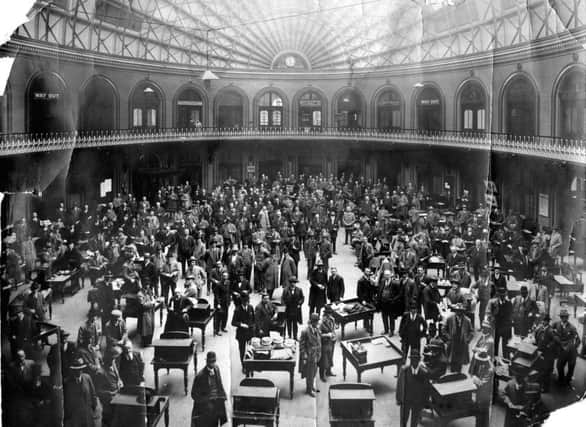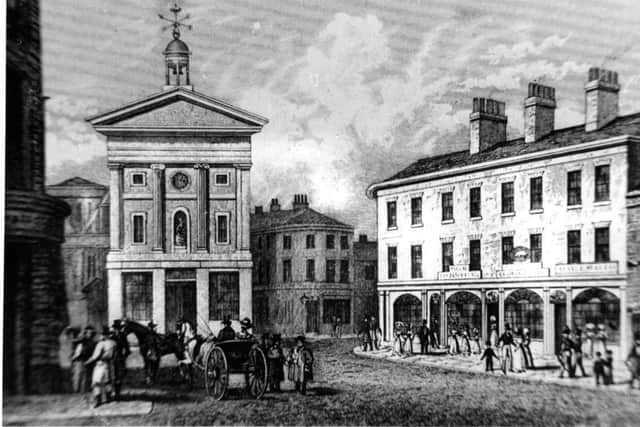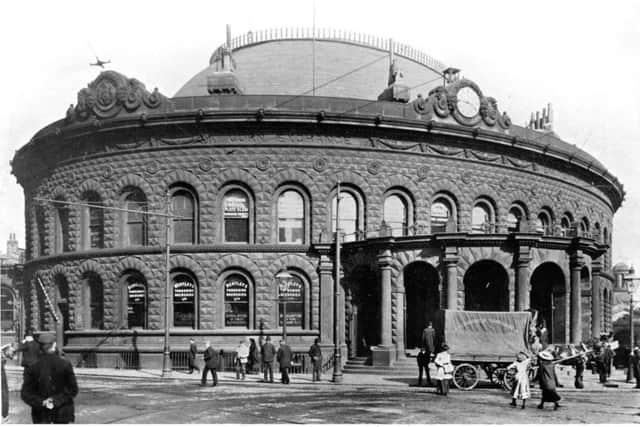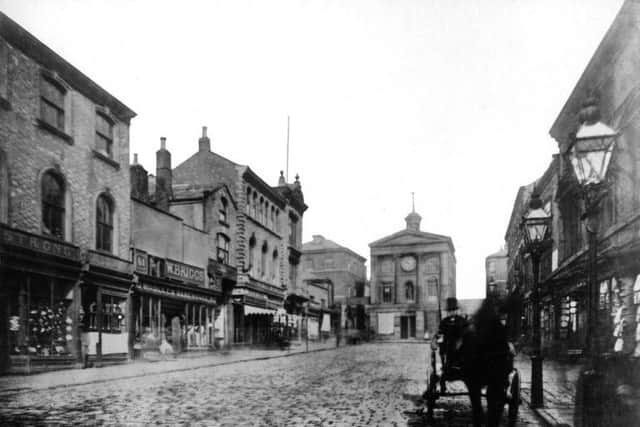The grand design created as Leeds' corn trade boomed


Their main function was to allow farmers and merchants to trade cereals, but there may have been two subsidiary purposes: to underline the wealth of those concerned with this branch of agriculture and to adorn the areas where they lived.
Impetus for building splendid corn exchanges may also be attributed not only to the development of cities and towns in the early 19th century but the flourishing British corn trade brought about by the Corn Laws of 1815. These were measures enforced in the UK, between 1815 and 1846, and imposed restrictions and tariffs on imported grain. They were designed to keep grain prices high to favour domestic producers.
Advertisement
Hide AdAdvertisement
Hide AdIn many instances, large quantities of corn were not sold directly from corn exchanges themselves but deals were done from the building and collections and deliveries arranged.


In Leeds, for centuries, farmers and merchants frequenting the corn market on Tuesdays had gathered in Cross Parish, adjacent to the Market Cross at the top of Briggate. On August 27, 1827, the foundation stone was laid by John Cawood for the town’s first purpose-built corn exchange – a small pedimented Ionic building. It was located on the north side of The Headrow looking down Briggate and was built to the designs of little-known local architect Samuel Chapman, between 1826 and 1828 and opened in 1829. Chapman’s father was head gardener at Harewood House.
Costing around £12,500, the new corn exchange comprised a central courtyard, where corn was sold; warehouses, offices for corn merchants, a hotel, tavern and four shops. The frontage was also adorned with the statue of Queen Anne, by sculptor Andrew Carpenter, transferred from the Moot Hall.
By the late 1850s the building was proving inadequate and members of the town council were inundated with protests from traders demanding more suitable accommodation. A site formerly occupied by surgeon George Bulmer’s house and his consulting rooms was acquired and the Markets Committee held a competition to find a design for a new corn exchange.
Advertisement
Hide AdAdvertisement
Hide AdMembers were impressed with the corn exchange at Edinburgh and wanted something similar. The competition was won by Cuthbert Brodrick; second was Leeds architect William Hill, and third were Lockwood and Mawson of Bradford. The building contract for £12,033 was awarded to Samuel Addy. The roof was to be constructed by Butler & Co, of Kirkstall Forge, and the total cost of the building, including land was expected to be around £25,000.


The foundation stone was laid on May 7, 1861, and was celebrated with processions in the streets, bands and a sumptuous dinner. Initially, building work was thwarted by the discovery of a few bell pits on the site, made as a result of digging for iron ore.
Brodrick’s design was influenced by 18th century Parisian architecture, most notably the Halle aux Blés, the Paris corn exchange, by Nicolas Le Camus de Mezeieres, built in the 1760s. Whereas the Parisian corn exchange is circular, Brodrick’s design is elliptical. He may have also absorbed influences from his earlier travels in Italy.
As well as containing a basement, Brodrick’s building is two storeys high, and used sandstone in its construction. The exterior features detailed masonry work, a parapet with a clock, a coat of arms and is richly decorated with swags and scrolls.
Advertisement
Hide AdAdvertisement
Hide AdWithin the building, offices surround a central space on both the ground and first floors, numbering 56 in total. Light poured in via the glazed central panel of the roof’s dome. This was later augmented by an area of glazing on the north side.


The corn exchange was opened for trading on July 28, 1863, and finally completed during February 1864. Surprisingly, there was no formal opening ceremony. The old corn exchange facing down Briggate was demolished in 1869.
Corn farmers and traders conducted their business within the ground floor open space and as anticipated, the corn exchange made Leeds one of the main corn markets in North. Business in its confines continued to flourish throughout the latter half of the 19th century.
Most corn dealers, between 10am and 2pm, inspected samples on stalls – small tables with sides to them and, according to Andrew Turton in Horse Drawn Transport in Leeds (2015), “core samples could be taken from sacks with a harpoon-like rod. If the core were black, the corn was unripe, wet or rotten”.
Advertisement
Hide AdAdvertisement
Hide AdWhen the process of trading wheat changed, the death knell was sounded for corn exchanges throughout the country. Since their demise quite a number have found other uses and are listed buildings whilst others have fallen victim to the wrecking ball.